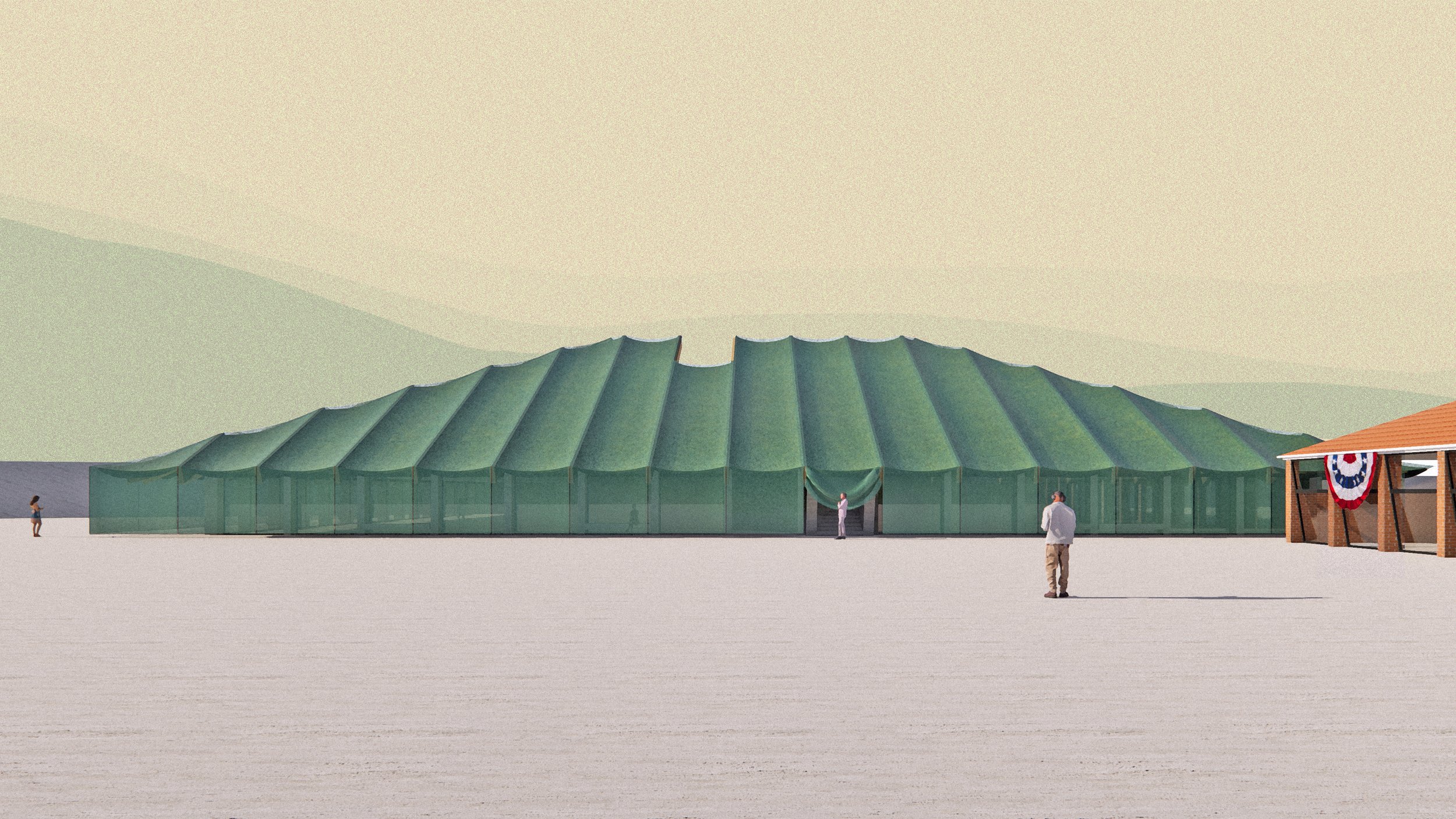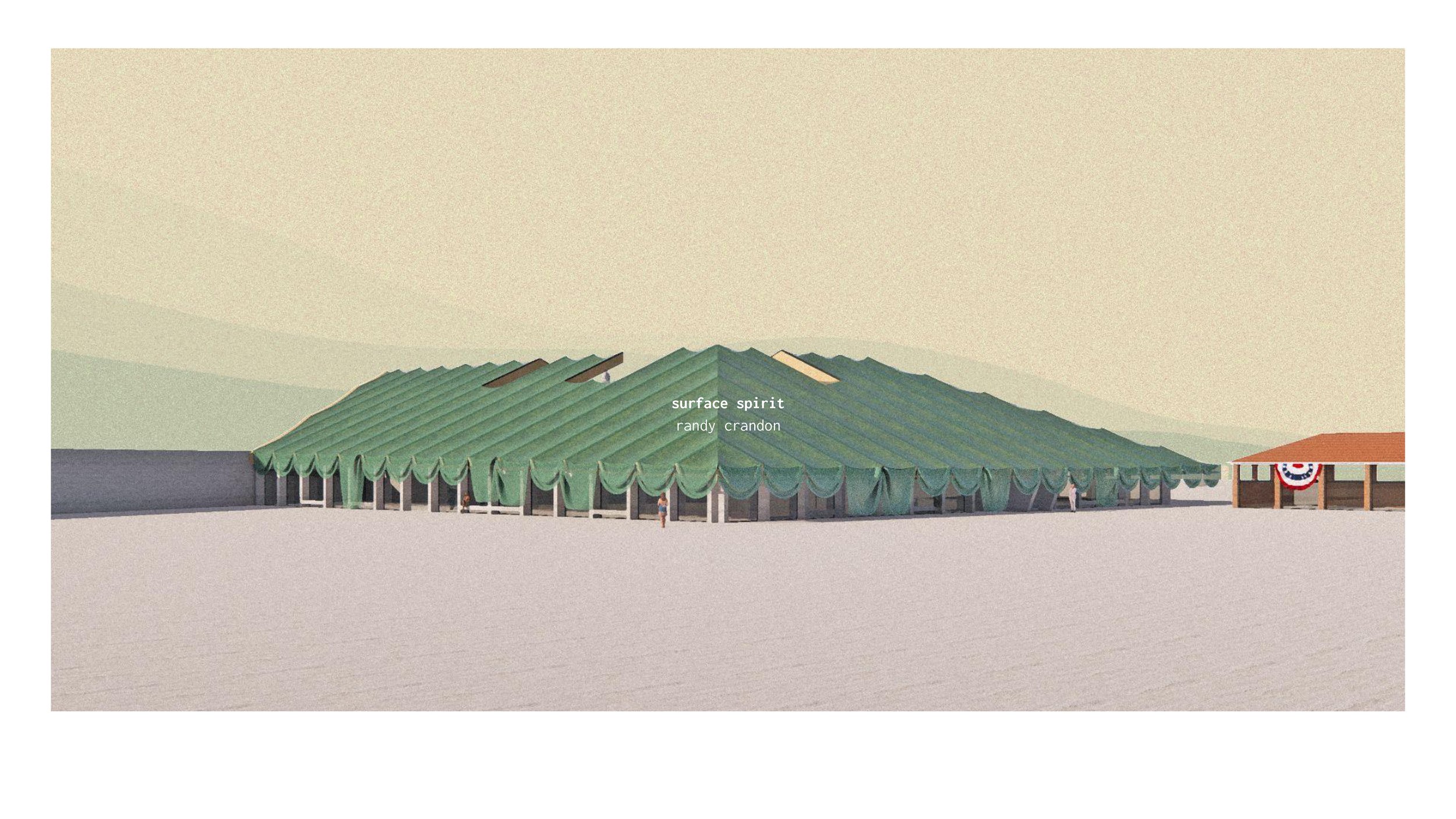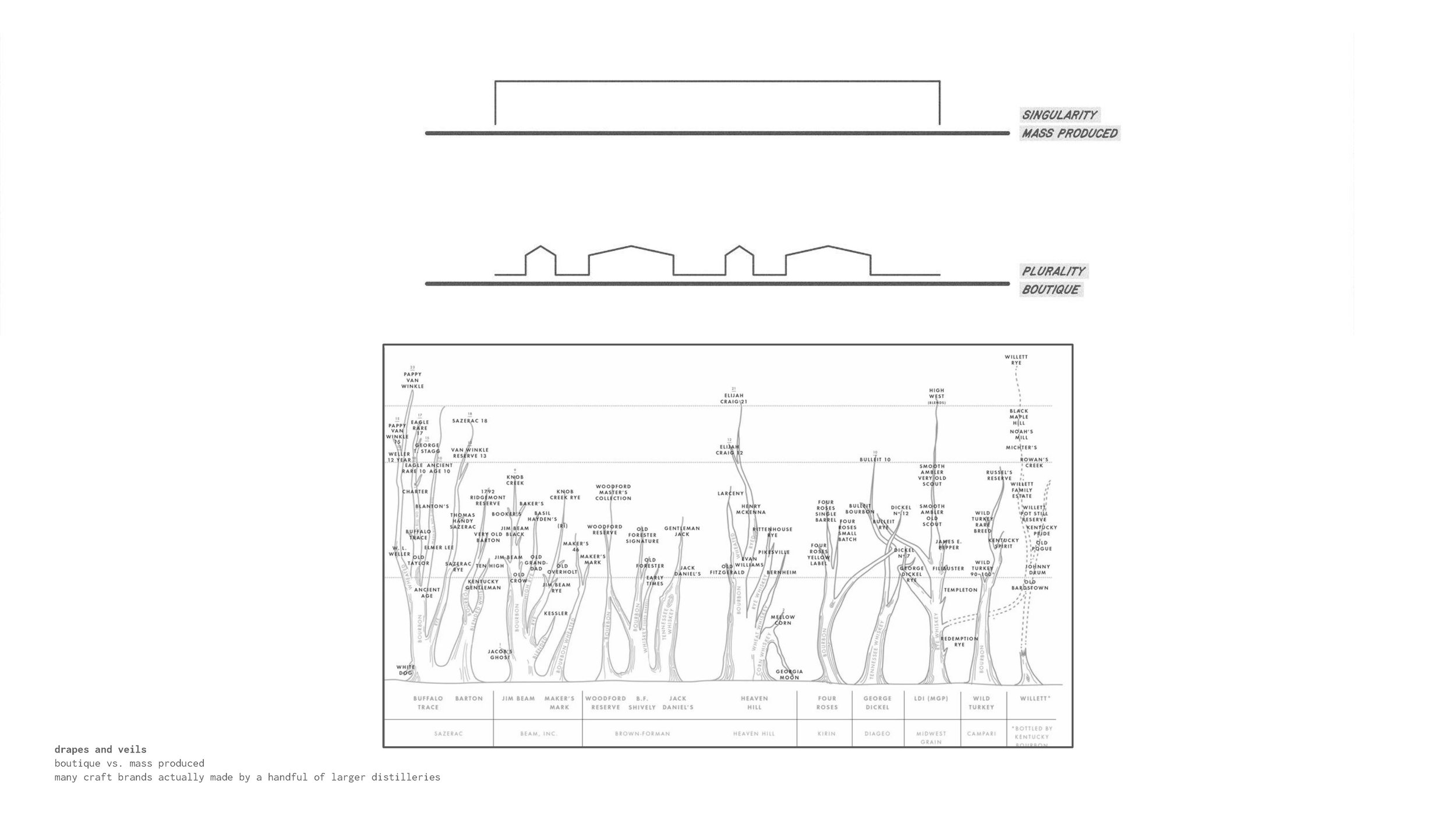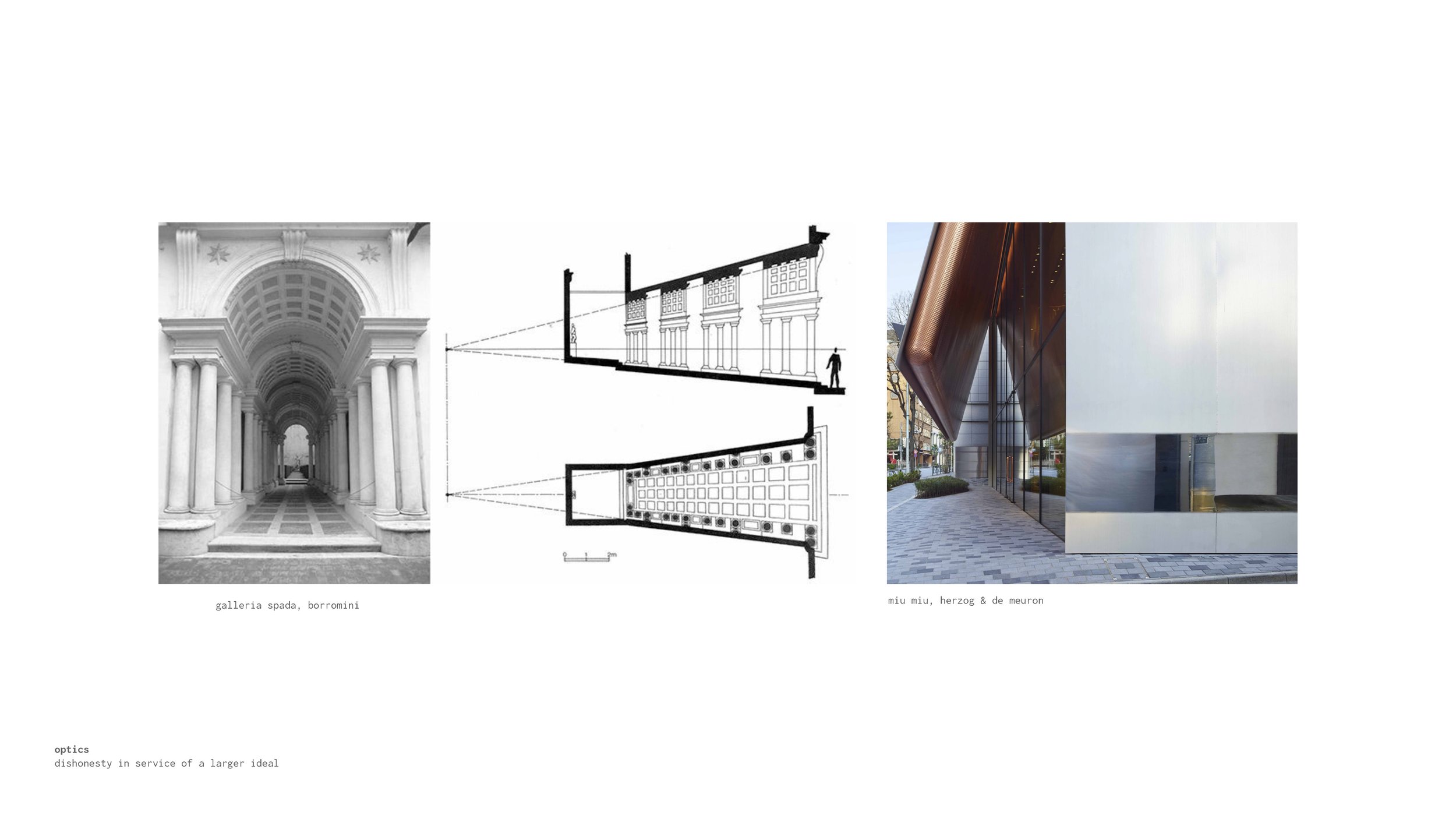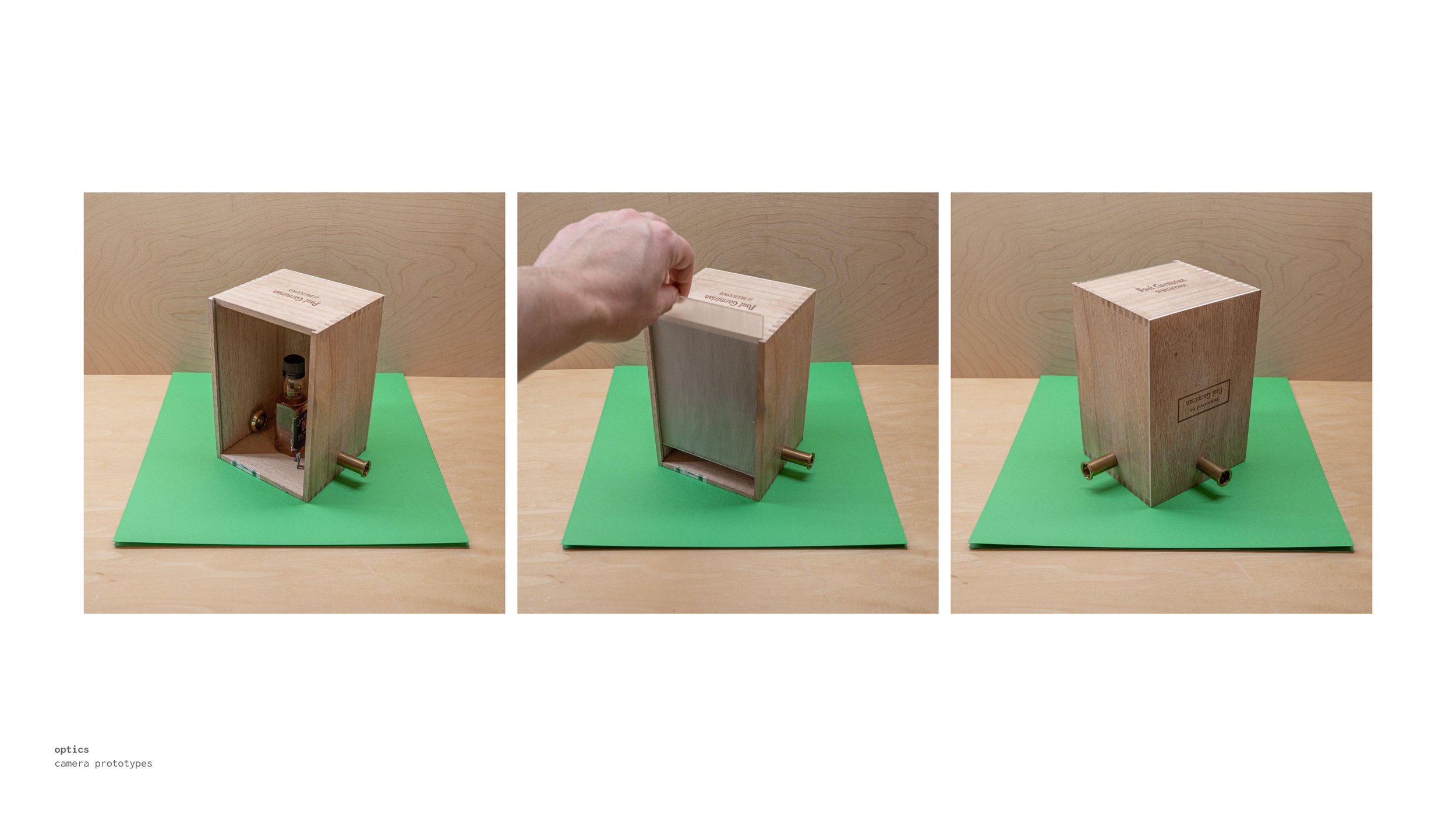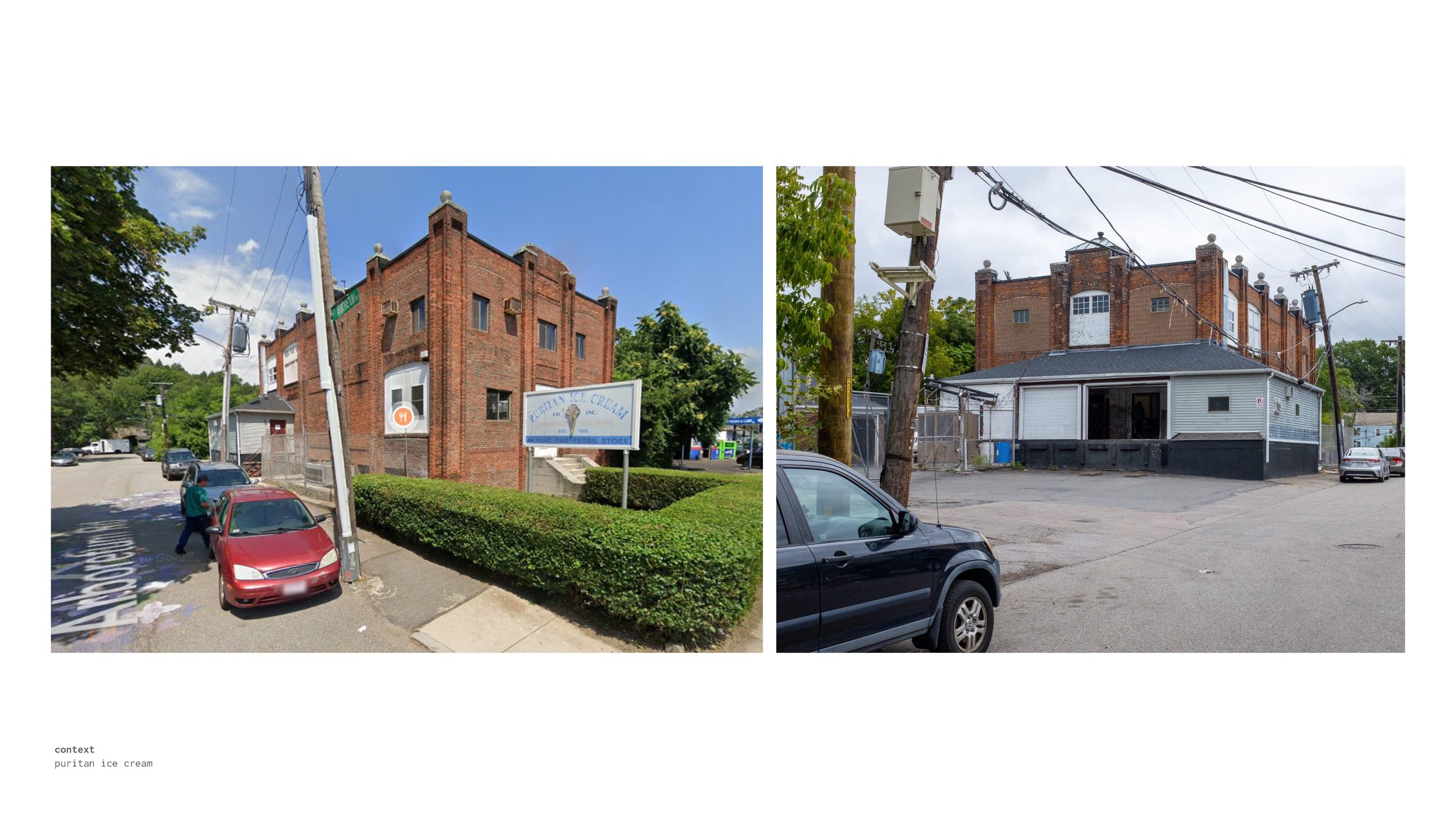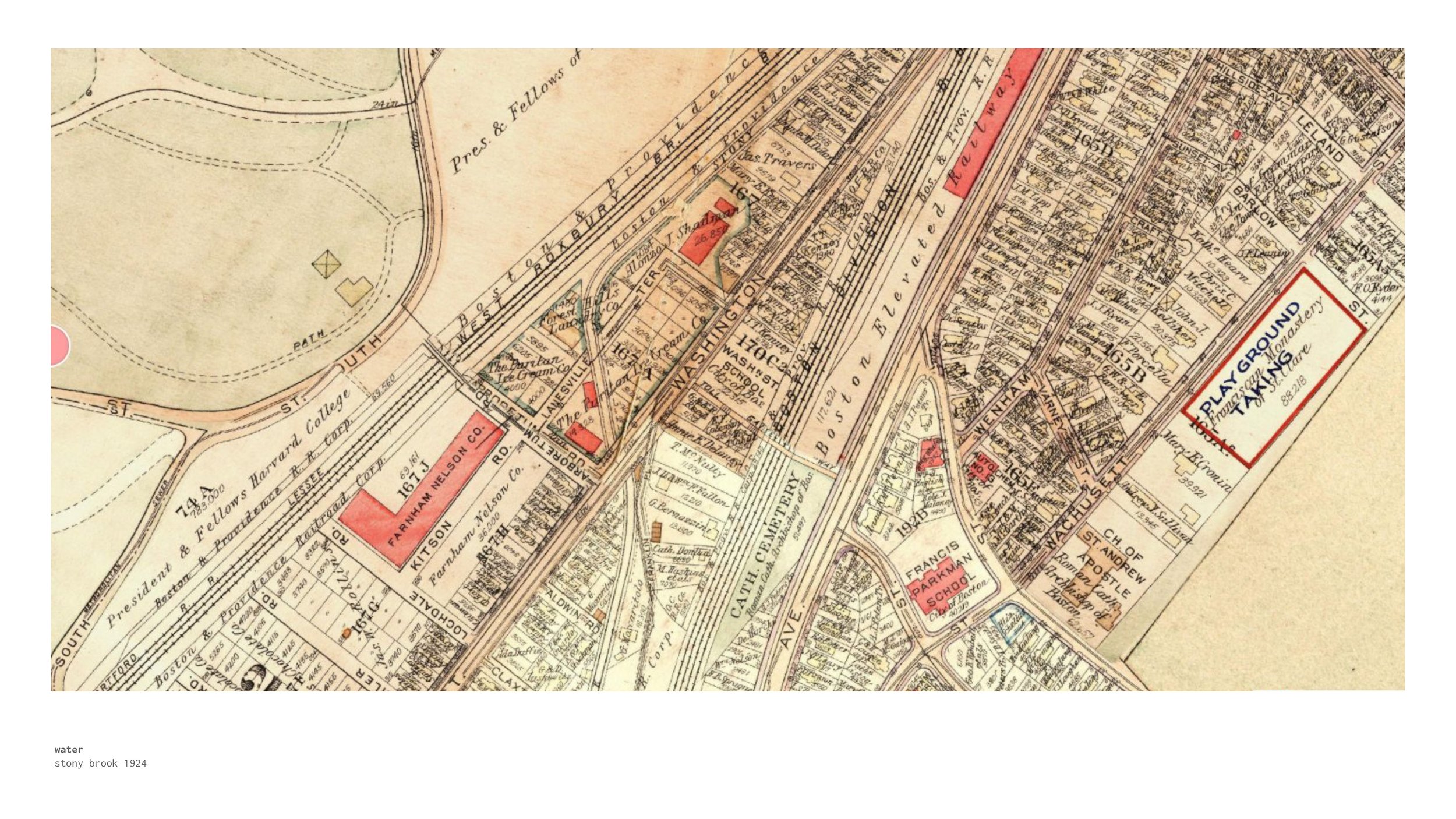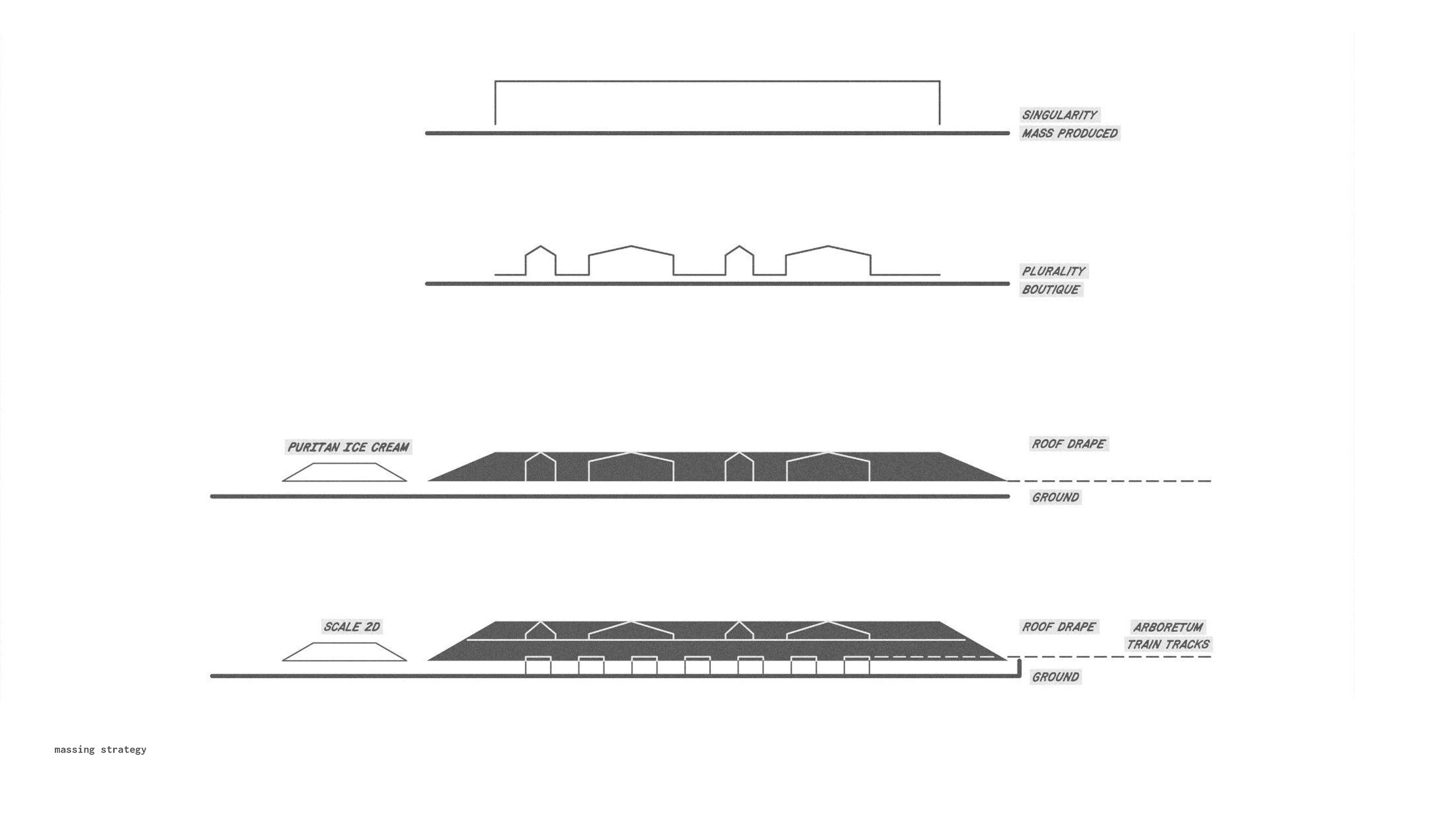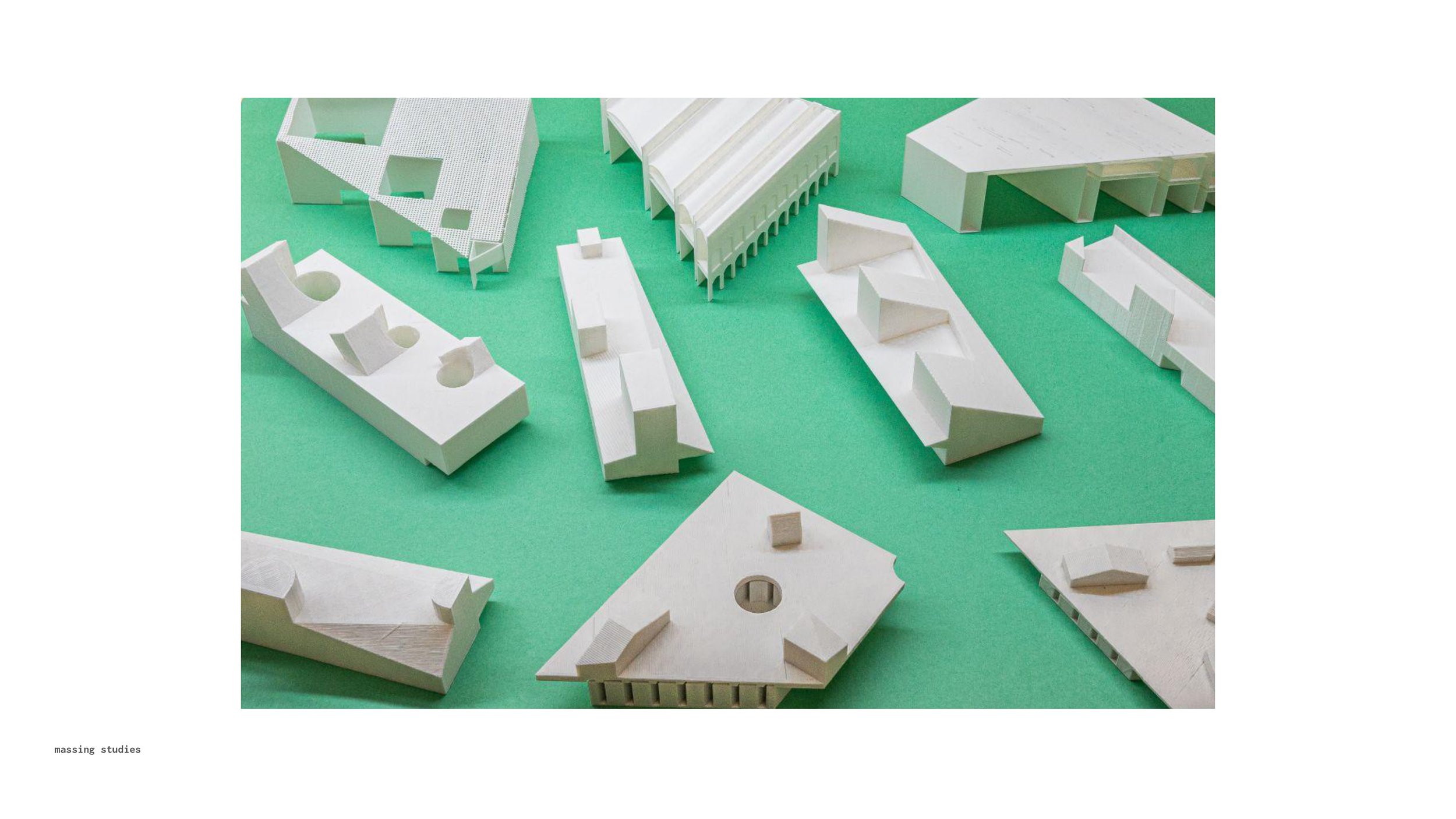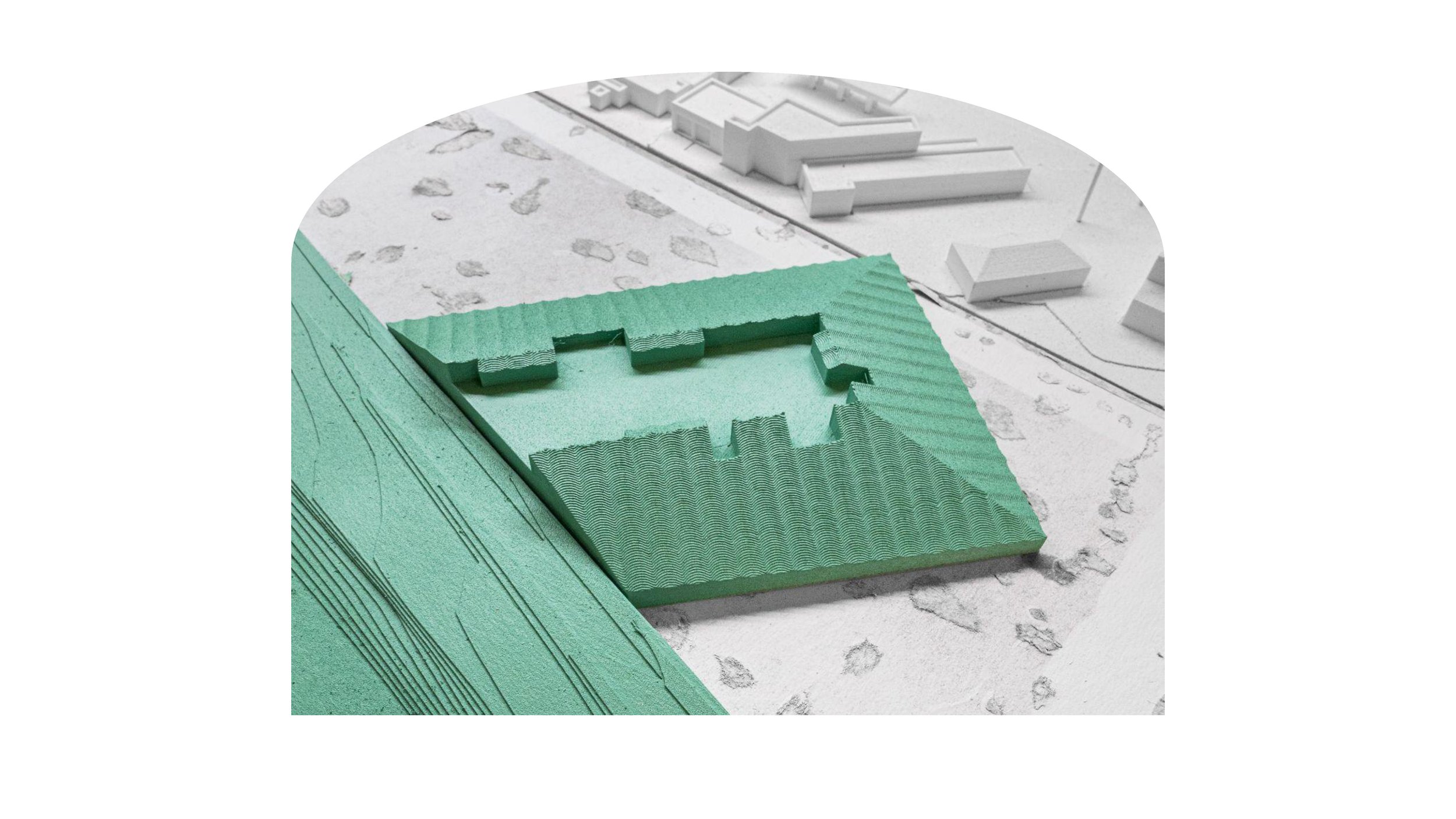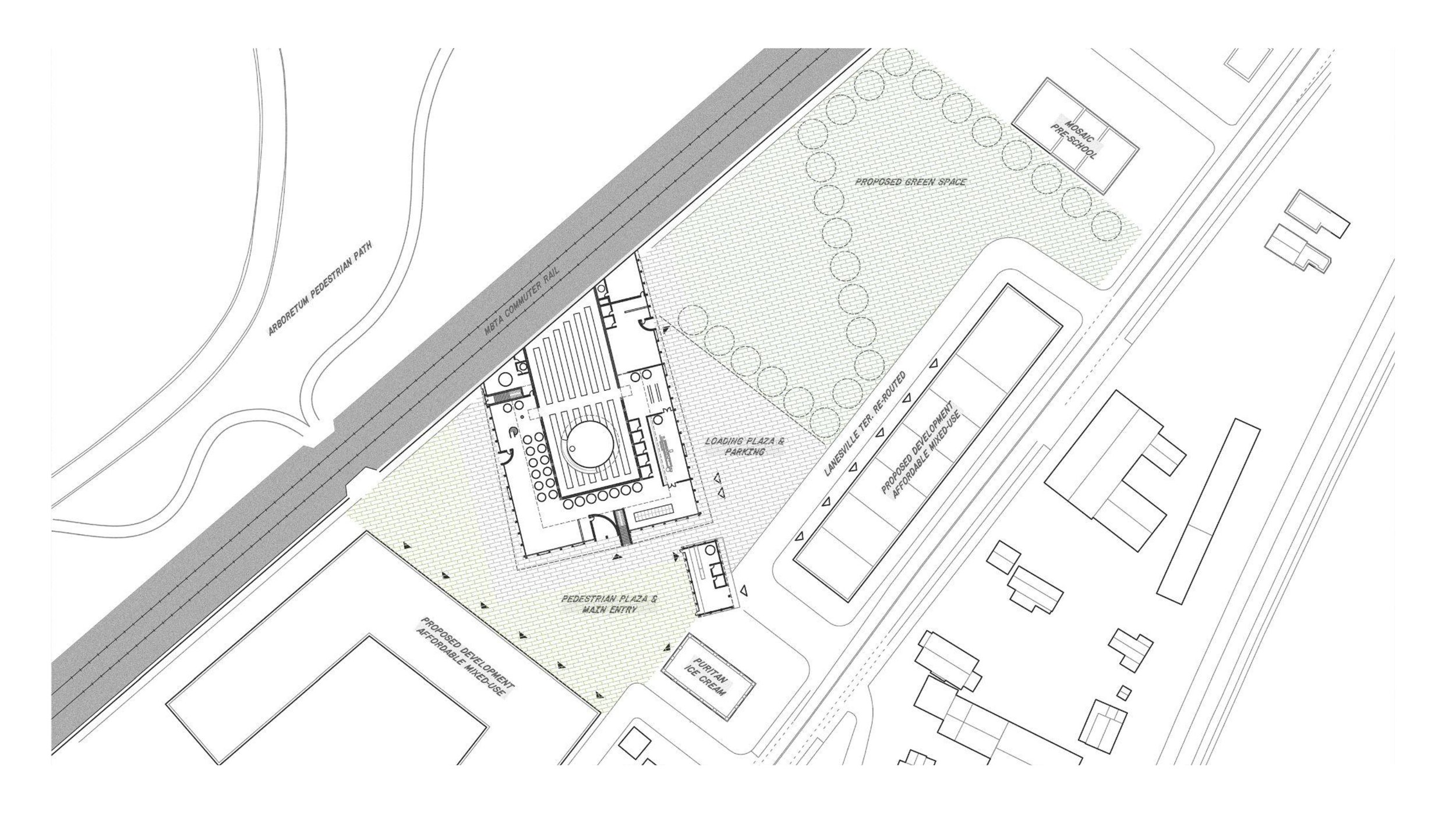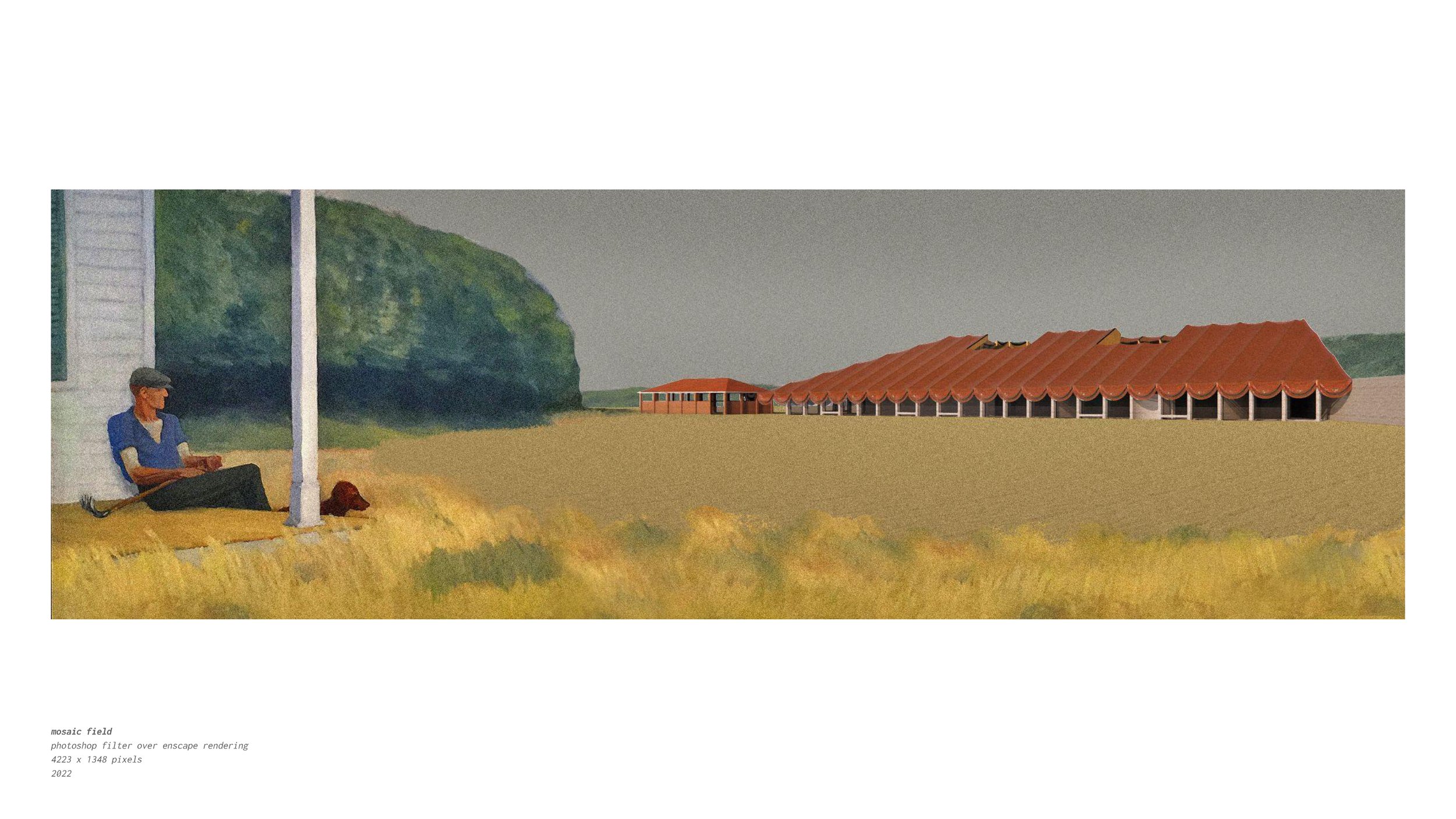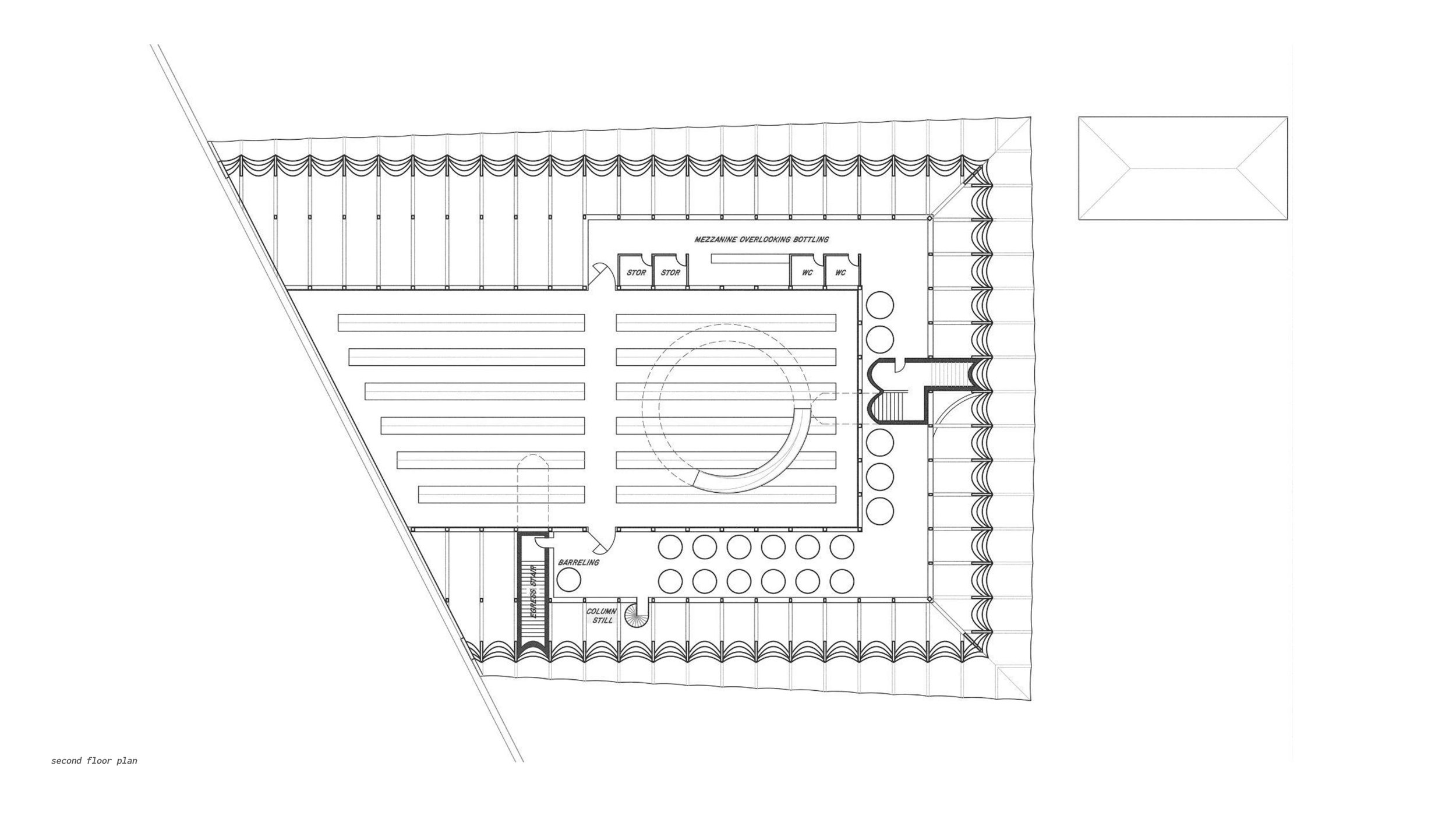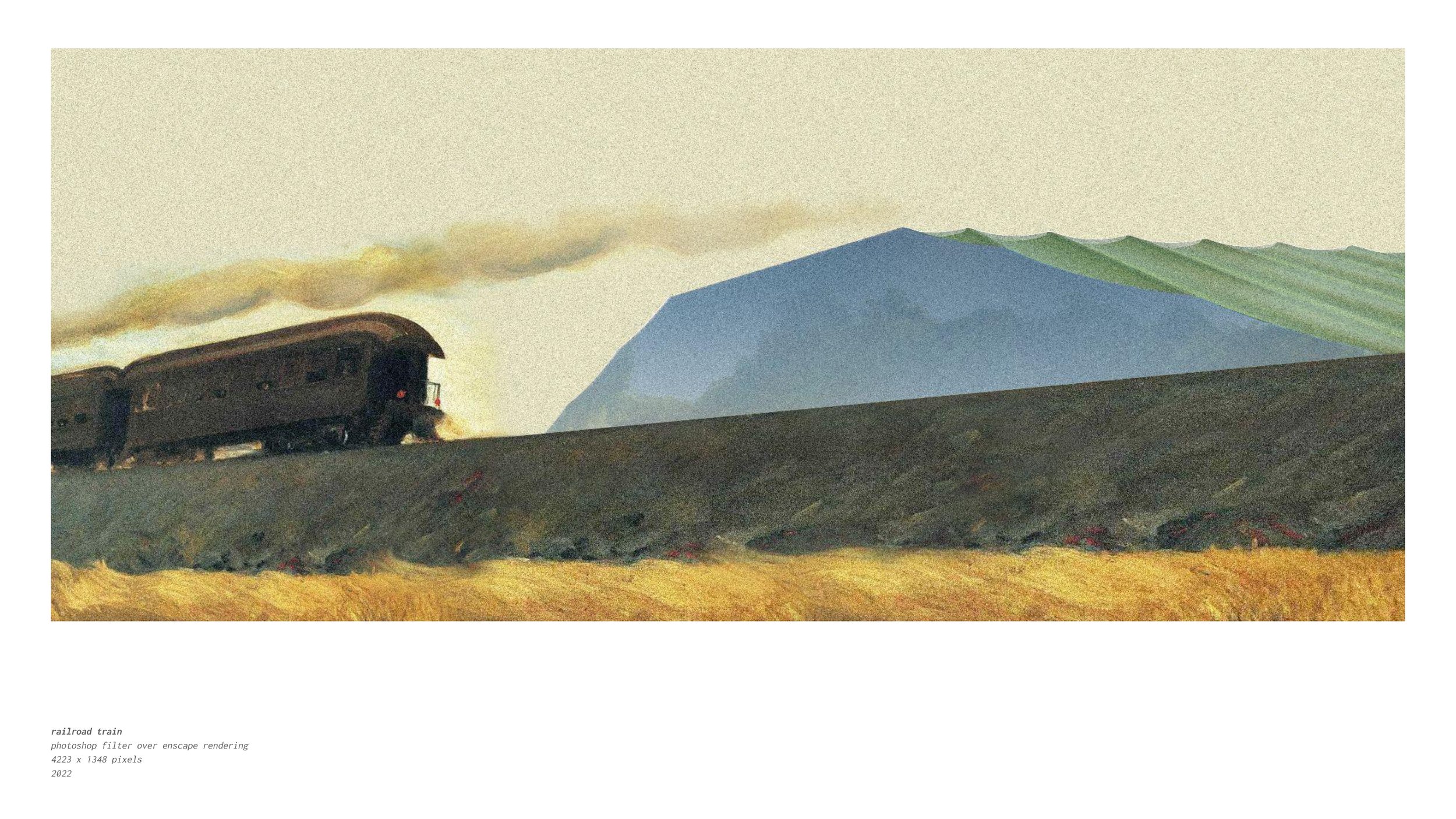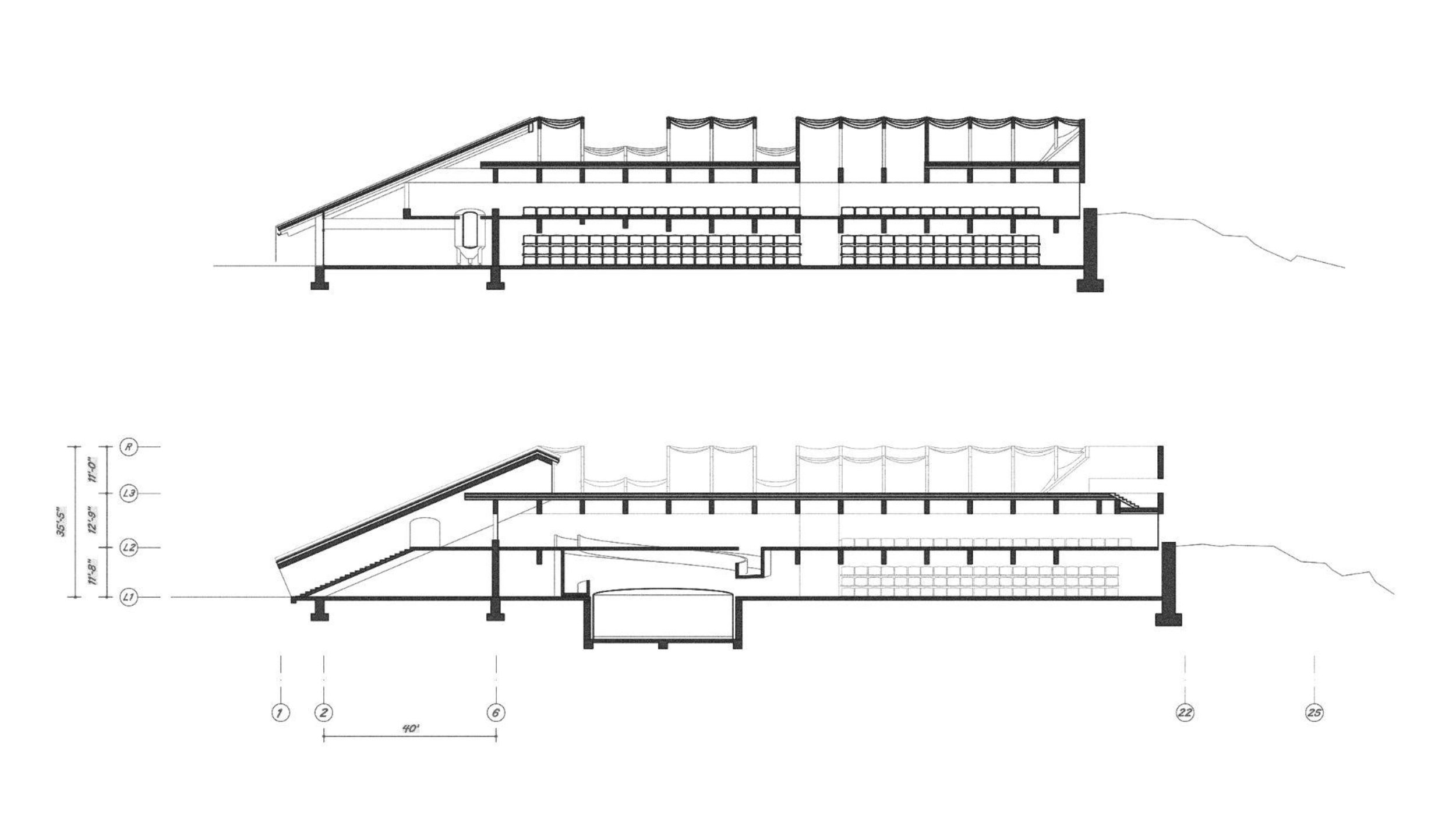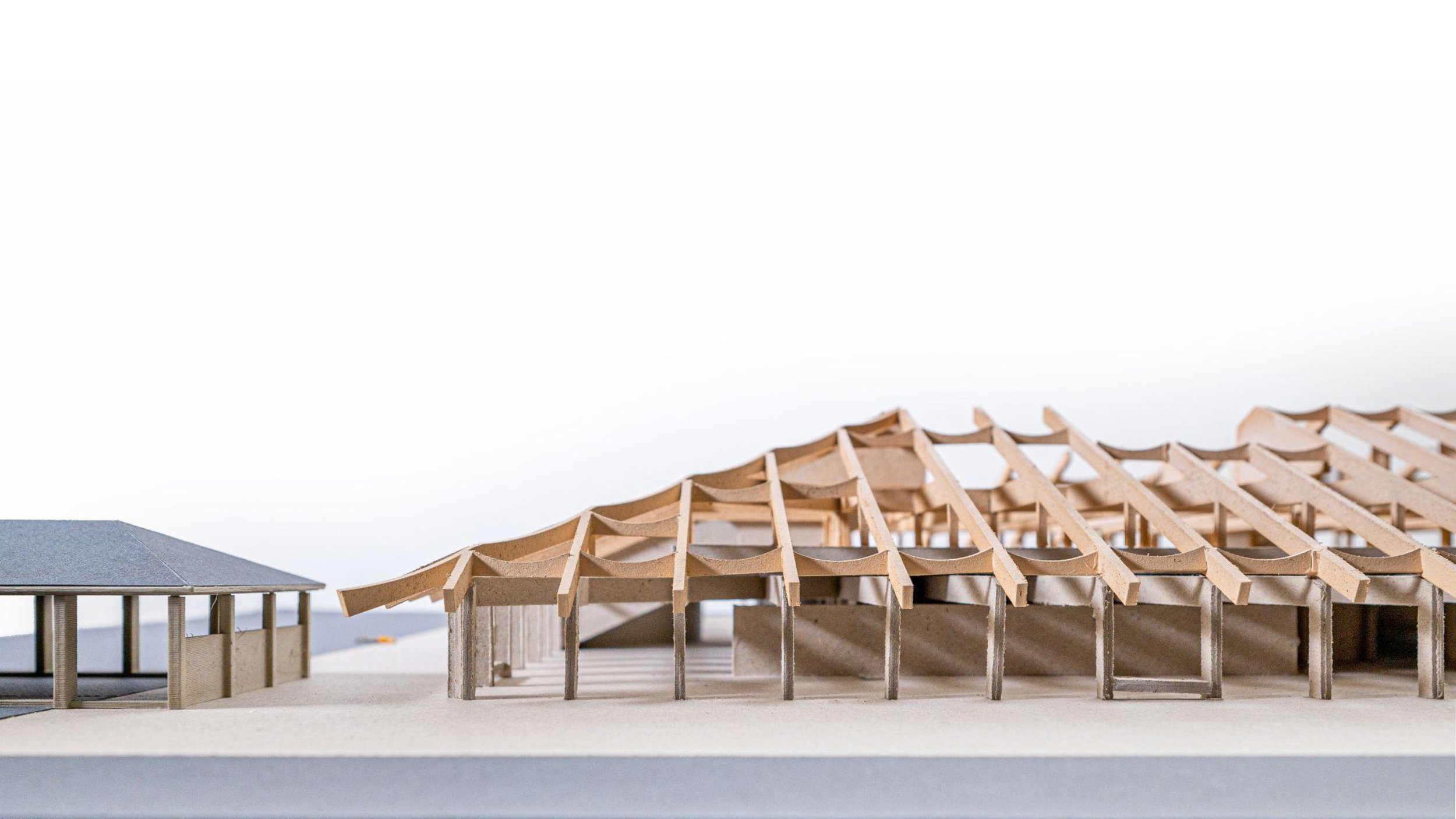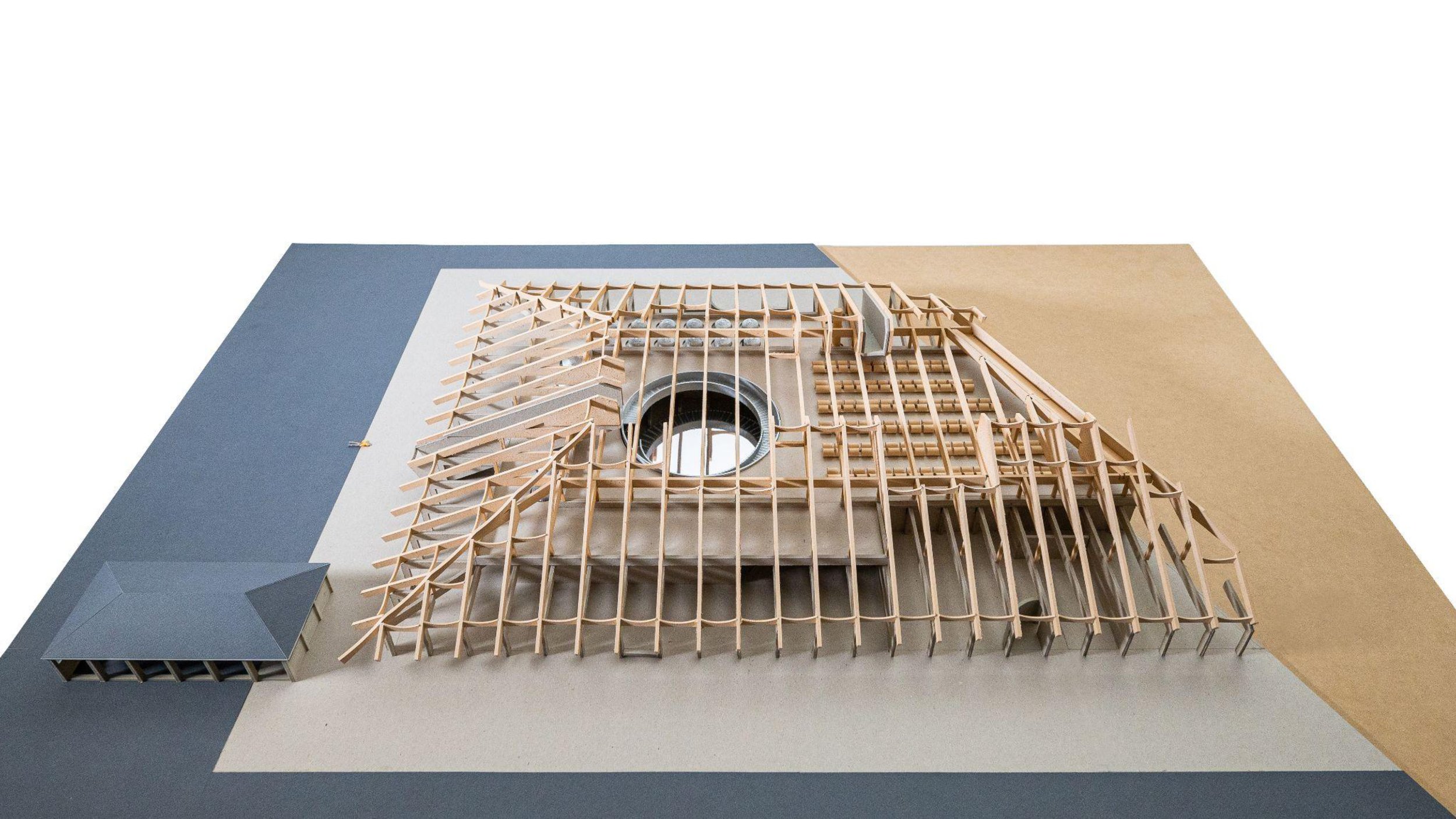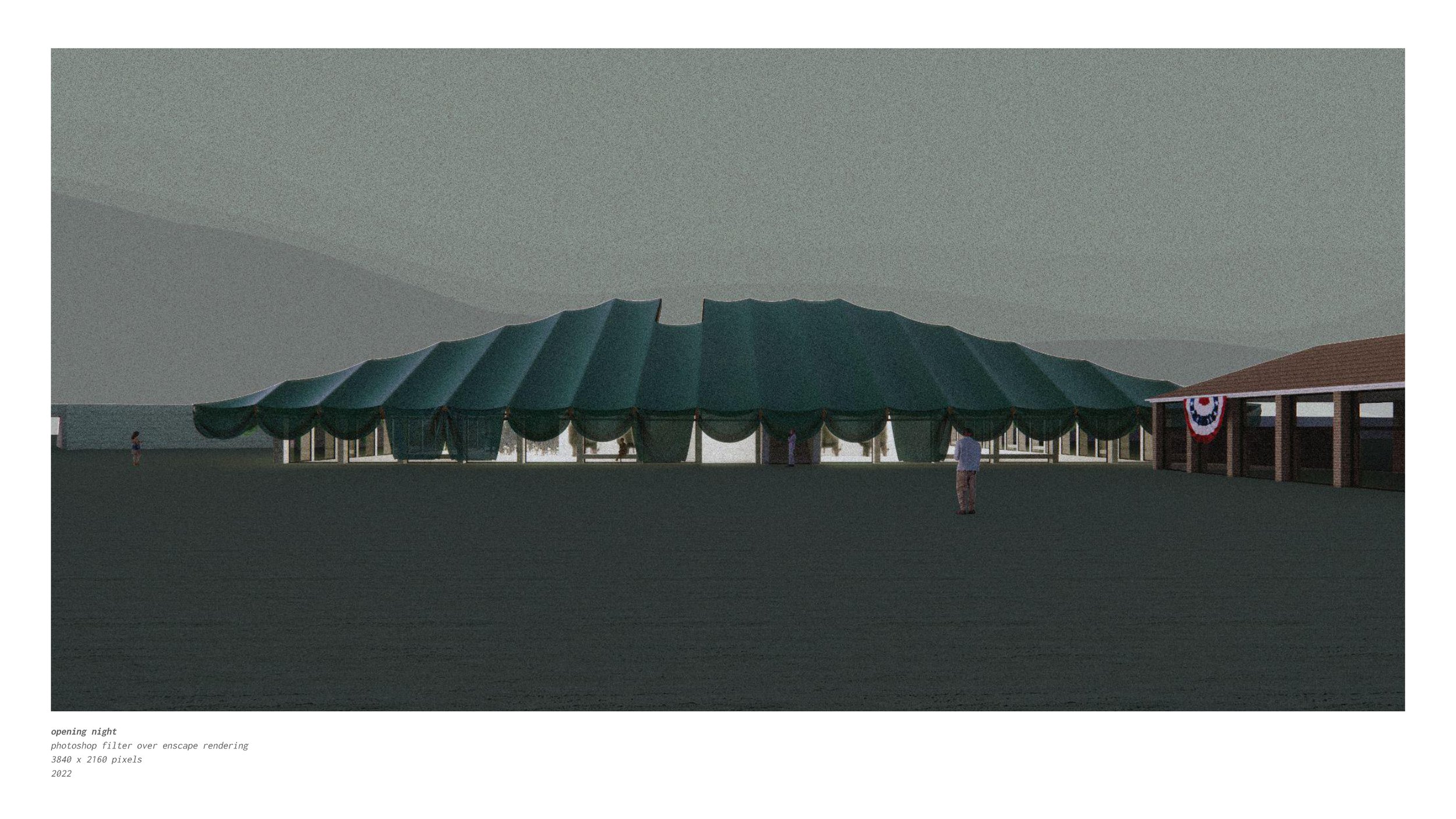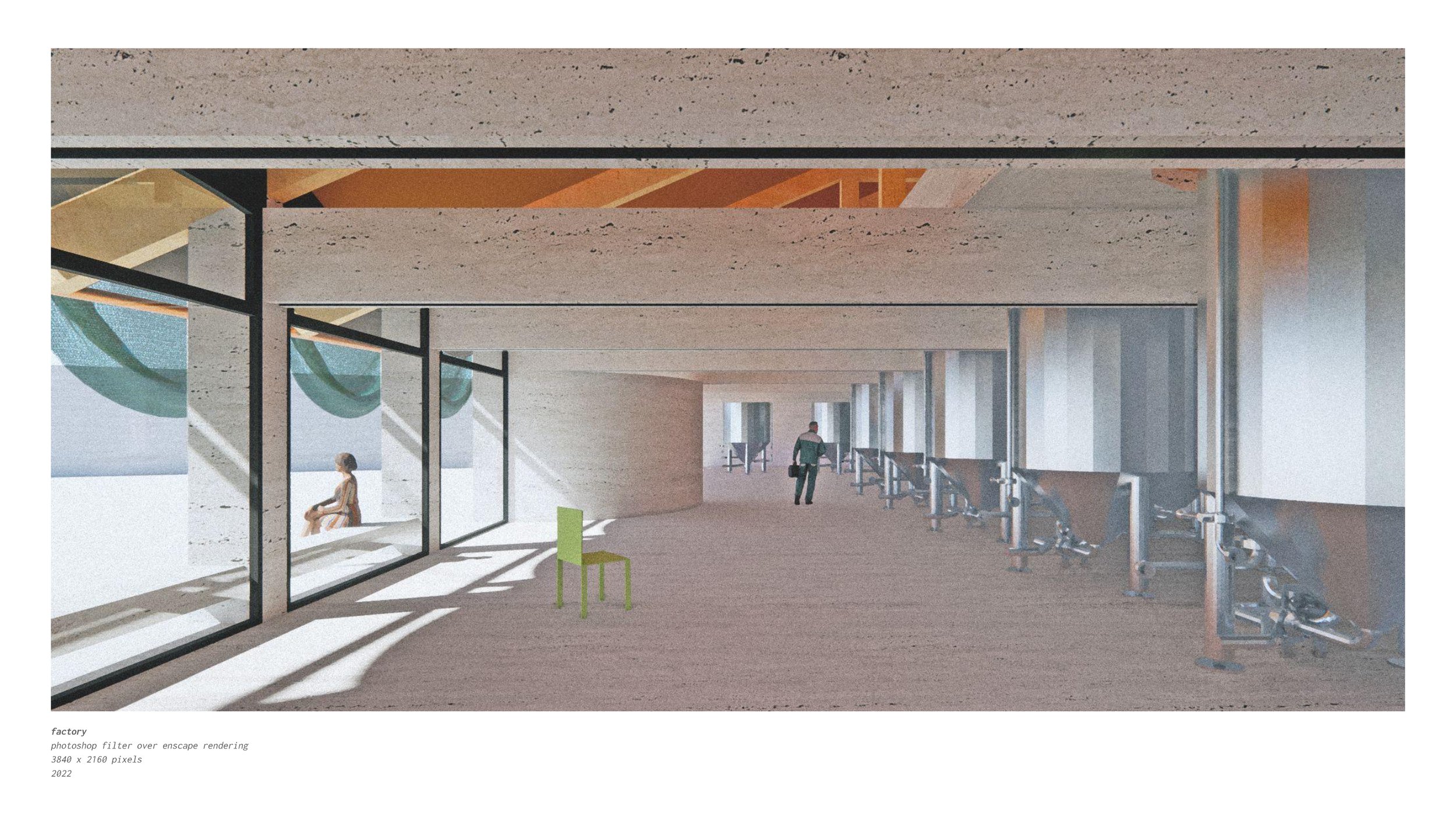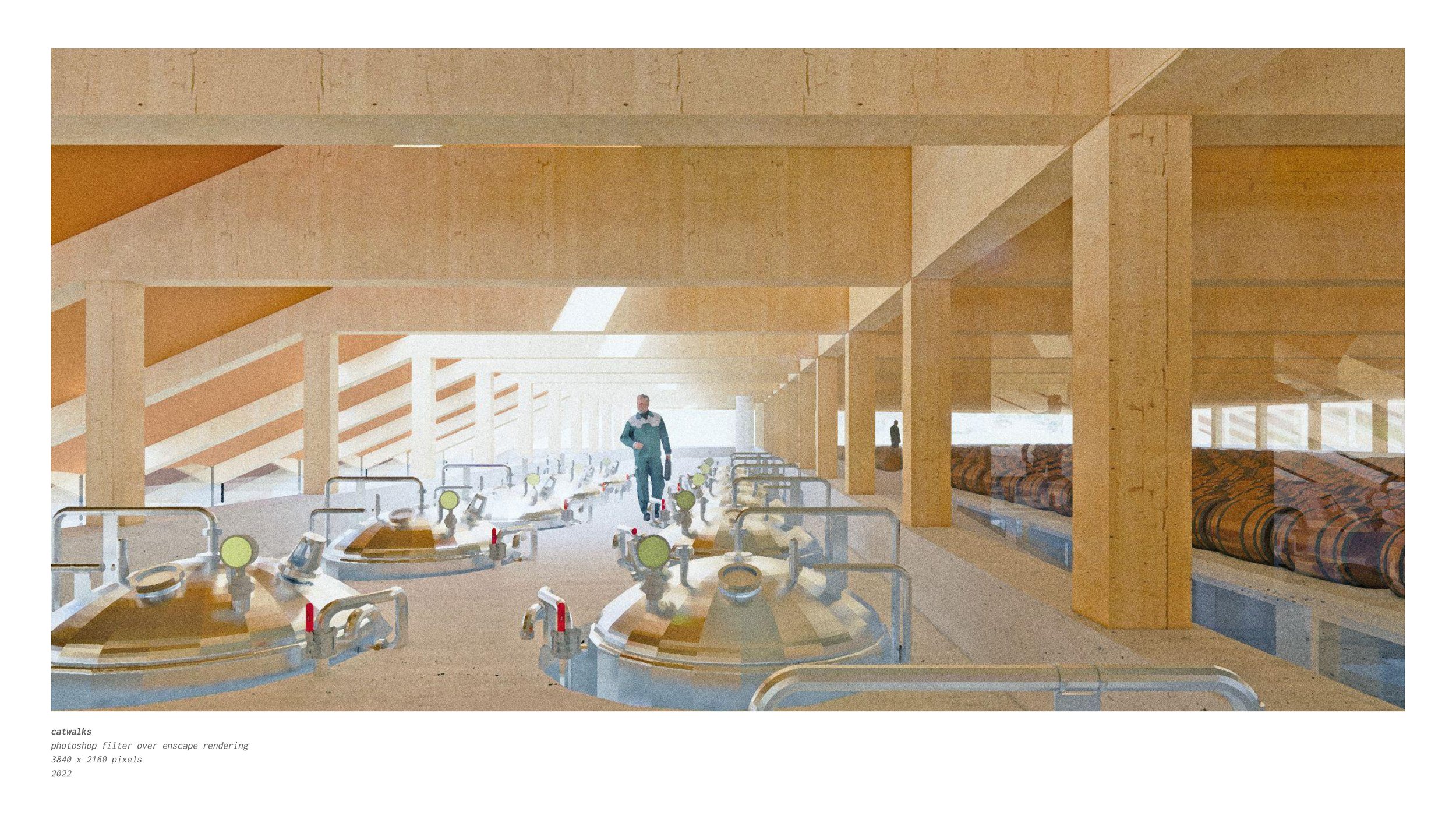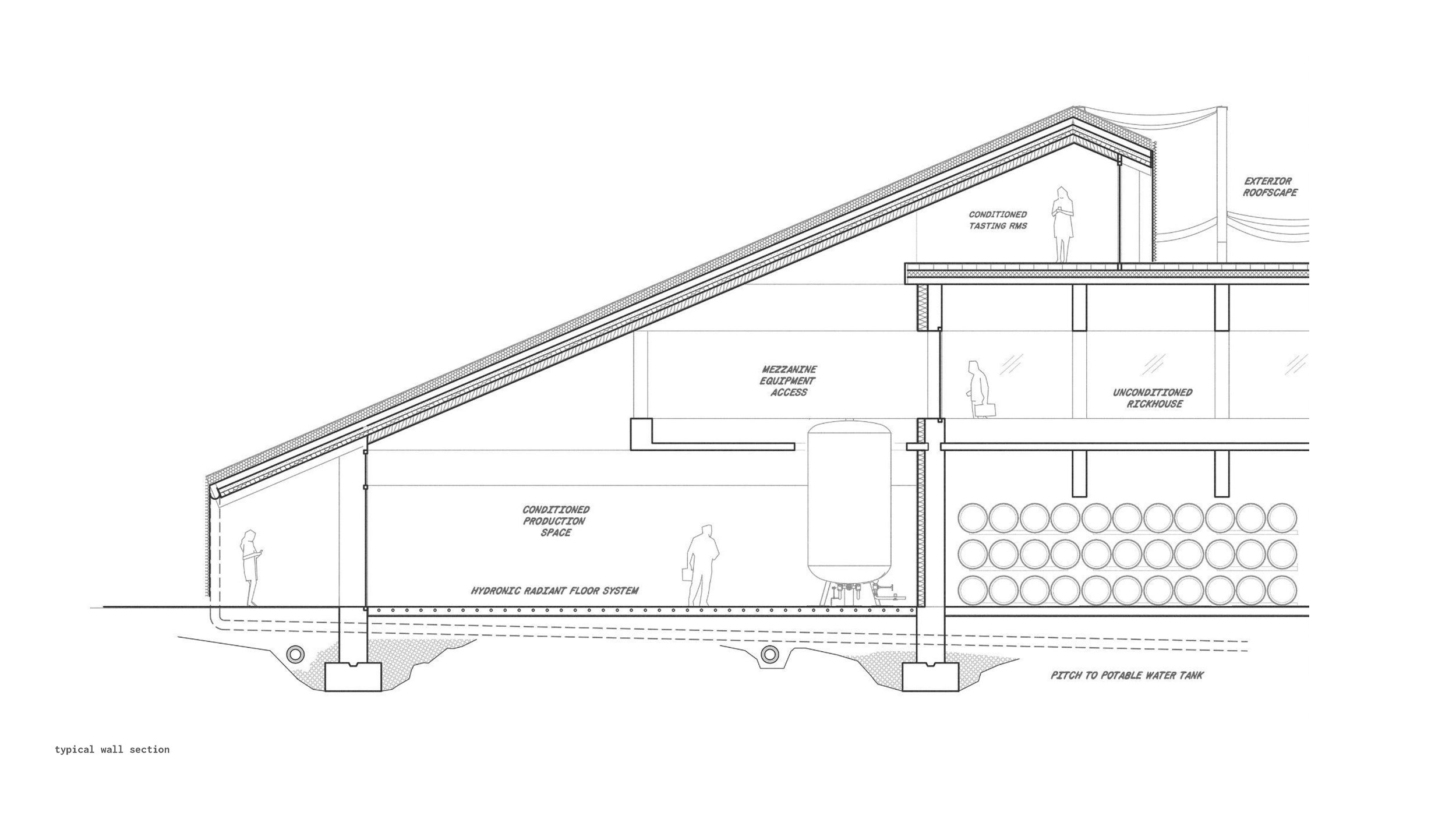Surface Spirit
Whiskey Distillery
Roslindale, MA
harvard graduate school of design
core III: integrate
instructor: grace la
critic: jonathan caron
provocateur: dylan herrmann-holt
This 50,000 sf urban whiskey distillery explores a tension between the boutique and the mass produced, the singularity and the plurality. The surface is the site of inquiry for the project. It is scaled and draped to express an anxiety towards corporate expansionism while being highly productive. The surface becomes a veil over the entire building and functions as a filter. Envisioned as a copper chainmail, the veil supports the growth of sphagnum moss underneath it on the building’s roof. Rainwater is filtered through the moss and purified - and then collected in a 100,000 potable water tank at the building’s core. This water is then used to proof down the whiskey spirit.
The site is layered with history: puritan ice cream company, a small production facility established more than a century ago, once owned an array of parcels in the area and still occupies two old masonry buildings today. One of them, a smaller storage shed with a hip, clay tile roof, was a catalyst for the distillery design. Unlike the surrounding building stock, this shed conformed to the stony brook river - an important trade/water/sewage artery that still connects to the charles river today.
The shed was scaled up in a rather blunt fashion to become the distillery. Limits to corporate expansionism are in full display here, whereby the train tracks at the northern edge of the site (which divides this post industrial neighborhood from olmstead’s arnold arboretum) abruptly cuts off the distillery massing. In doing so, the cut expresses a reverence for an urban context which has been subject to gentrification, a dwindling affordable housing stock, and a lack of connection to the arboretum.
The collaging of Edward Hopper’s work was appropriate given the regional context and motifs in play. His artful expression of a post-war isolationism and anxiety is reinterpreted in this proposal: a weariness of “napa-fication” and voyeurism is explored.

